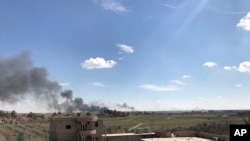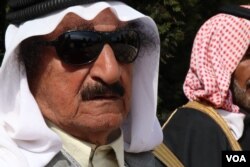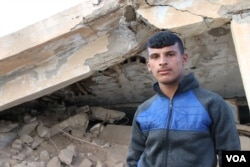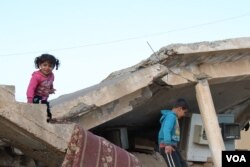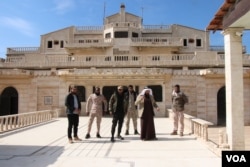Heavy fighting continued throughout the first full day of the final assault on the Islamic State militant group's last bit of land, according to Syrian Democratic Forces spokesman Mustafa Bali.
Victory may be near, with the militants surrounded and all civilian "human shields" believed to be safe in camps beyond the fighting in Baghuz, soldiers say. But some local leaders warn that with this victory will come a new set of problems.
"The battle will end temporarily," said Sheikh Humaydi Daham al-Hadi, a prominent tribal and provincial leader within Syria's semi-autonomous Kurdish region. "But the negative impact will continue for years."
The Internationally backed SDF pushed forward slowly Saturday, reclaiming parts of what is a tent city on the banks of the Euphrates River next to Baghuz. While not illustrious in nature, the camp has ended up being the scene of IS's last attempt to hold land in Syria or Iraq. Locals caution, though, that IS attacks in the region continue almost daily.
About an hour's drive away, in a small town called Tel Hamees, Suliman, 17, a junior military volunteer, recently returned from the front lines in Baghuz. Almost all the locals in his town fled ahead of the first militant group that overran Tel Hamees years ago, and returned only when the third group, IS, was forced out in 2017.
Suliman also serves at one of the many checkpoints that dot the roads between cities and towns across the country. These checkpoints in parts of Syria's northeast have become a constant target, where the archenemies of IS are out in the open, exposed in small numbers.
"Sometimes they attack briefly and then disappear," explained Suliman, as his young cousins played on the remnants of a bombed-out house, "just so we know they are there."
Historical problem
In a camp a few hours away, about 400 families of foreign IS fighters are trying to make homes for themselves, with no knowledge of whether or when their countries or families will take them back. Children run with kites on the muddy roads lined with tents covered in blue tarps to keep out the winter rain.
Sabina, a 30-year-old Bosnian woman, says she has nothing to hide. Her husband joined IS because he was a witness to the ethnic cleansing campaign and genocide against Bosnian Muslims in the 1990s. She followed him to what was then becoming an Islamic "State" because it seemed like a good idea to ensure their safety and the safety of their future children.
"I was young and crazy and said, 'OK,' " she said Friday in the camp manager's office.
At the time, however, it seemed anything but crazy to her husband, who went on to become an IS fighter. Even today, she sees the Islamic State as collapsing and never to return, but because of its constant state of war — not its reputation as a brutal group that terrorized people in Iraq, Syria and around the world.
"You know, the women who I know didn't know anything about this," she said. "I never saw this. And I was there a long time."
Beyond IS
A peaceful future, according to al-Hadi, means breaking this cycle of violence with negotiations, education and reconstruction. Mothers of slain militants need to be persuaded not to teach their children to follow in their fathers' footsteps. Destroyed cities and towns need to be rebuilt. Bodies of victims in former IS territories need to be found, buried and mourned.
"It's good that they are winning the battles now," Sheikh al-Hadi said, as the group grew ahead of lunchtime. "But if it all ends this way, the problem will continue."
And as the civil war's eighth year nears an end, the future of the region is increasingly insecure. International conflicts are on the verge of playing out in northeastern Syria, and its semi-autonomous government does not have the size or the resources to secure every road and town.
"Individual attacks are more dangerous than comprehensive attacks," the sheikh warned. "At least when you are attacked by a group, you know who the enemy is."




